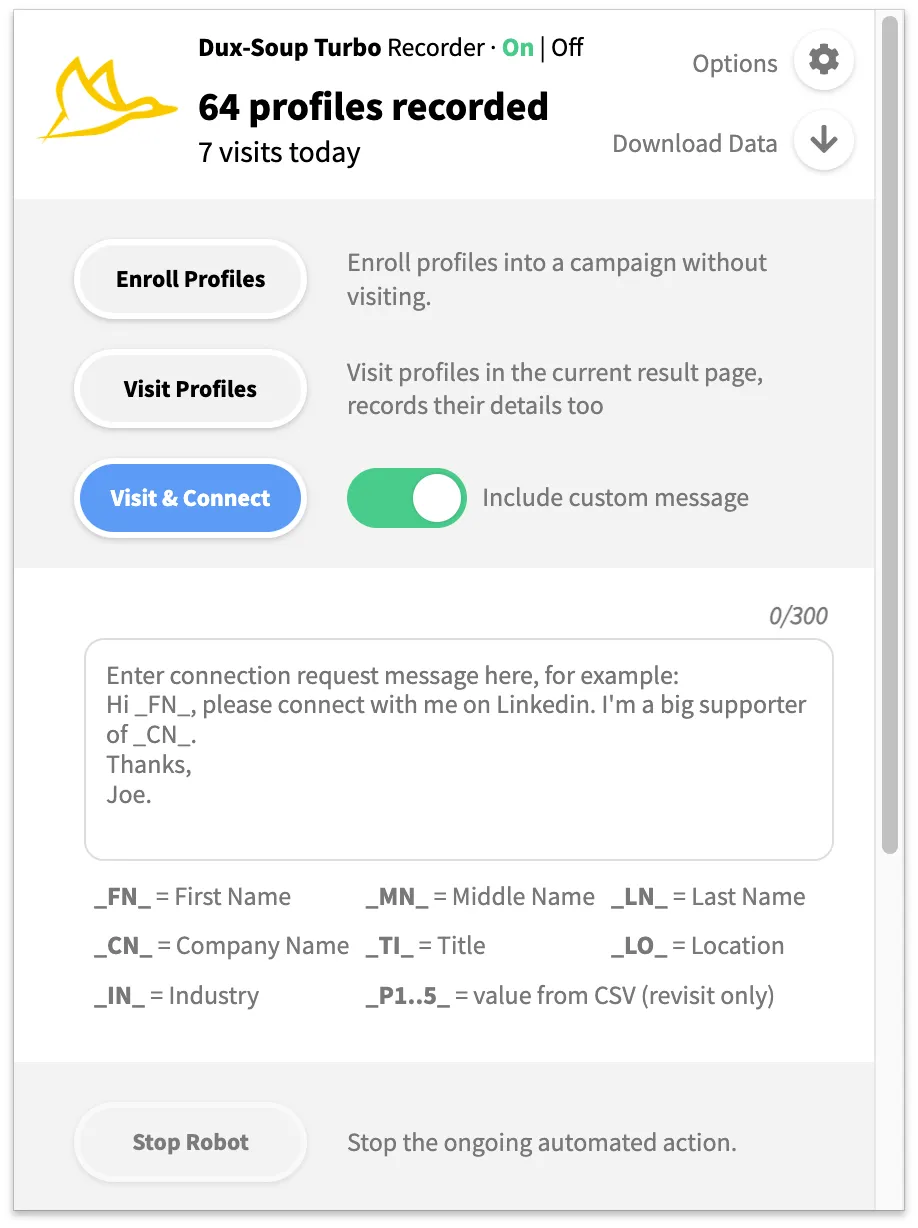As you can imagine, millions of people are using LinkedIn every day and there are thousands of ways to reach out them. Dux-Soup can easily automate profile visits and messages which instantly makes your day more productive. However, if you are just getting started, the first question you need to ask yourself is — who is my target audience?
It can seem tricky at first to determine what job roles you need to target on LinkedIn as this criterion varies for each individual company. To help you out, we will discuss one of the best ways you can find your ideal customer on LinkedIn and target them with the help of Dux-Soup.
This blog showcases an expert user interface. If you don’t find the options mentioned here, simply enable them in the User tab located within Dux-Soup Options.

Step 1:
Follow these suggested steps to get started. Please note that for this example we will be using standard LinkedIn and Dux-Soup Pro account.
- Find a few companies that you know would be an ideal client. For example, your ideal client would be Holiday Inn and you are looking to contact their sales department, however, you are not sure what keywords you should use in your Linkedin search.
- The next step is finding this company on LinkedIn and click to see all employees within that company

3. Scan all employees using Dux-Soup “Scan Data” feature.

The reason why we are using scanning here is because we simply need to obtain the information as quickly as possible and scanning is the perfect way of scraping hundreds of contacts in minutes. This will give us a better idea what job roles they categorise themselves as.
4. Perform this action with every ideal company on LinkedIn until you have scanned at least 2 companies.
5. Once the scanning is done, click to “Download Data”
.webp)
6. You will receive a CSV file that you need to open on Excel. You will get the following information about the profile:
- ID
- Scan Time
- LinkedIn URL
- First Name
- Last Name
- Title
- Location
This information is sufficient enough for us to determine what job roles are prevailing in your target companies/industries. It gives a better idea who you need to target and what search criteria you need to use in your LinkedIn search. As per our example, you will found out that the most used job roles are Sales Director, Director of Sales and Sales Executive.
Step 2
As you now have the job roles that you can target, let’s set up a search on LinkedIn and start connecting with these leads!
Using our example, let’s say that you are targeting hotels located in the United States, looking to connect with their decision makers in the sales department. Go ahead and set up your LinkedIn search filters as follows:
Degree — 2nd connections
Location — USA
Industry — Hospitality
Title — “Director of Sales” OR “Sales Executive” OR “Sales Director”
The reason we are using the boolean search string (“Director of Sales” OR “Sales Executive” OR “Sales Director”) is because it will give us a bigger pool of results and it’s a good way to gather all relevant data in one search instead of running individual searches for each of the target job roles.
Your final search filters should look like this:



Finally, click “Apply” and you will get a final list of results that match your search criteria.
Step 3
It’s time to contact them with Dux-Soup and send connection requests.
Go to Options and enable the function to “Send connection requests to 2nd and 3rd degree connections”

Make sure you add your connection message and use appropriate markers to make it more personalised, e.g. you can use _FN_ marker that will be replaced by their first name or _CN_ that will be replaced with their company name.
Once the message is ready, return to your LinkedIn page and click “Visit & Connect” on Dux-Soup:

You will see it running and contacting the profiles on the list:

Here you have it — one of the ways to determine your target audience and automate visiting with Dux-Soup. We hope you got some ideas and inspiration for your next lead generation campaign on LinkedIn.
Have any questions or comments? Let us know by contacting info@dux-soup.comand we’d be happy to help.
















